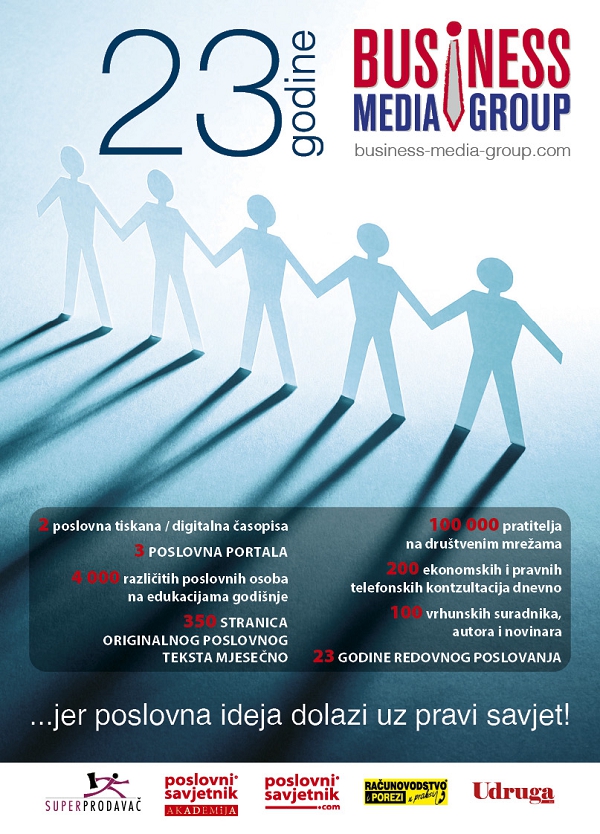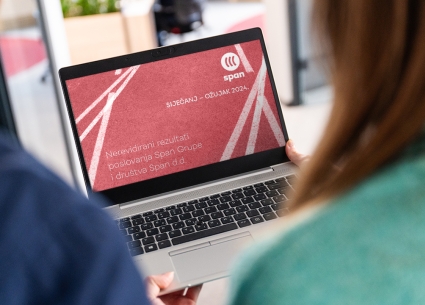John Lodder: How a CEO could improve results in a ‘fast changing’ VUCA world?
My June column is based on the latest Gallup report about ‘The State of the Global Workforce 2023’ of which the results are very shocking for me. I give important highlights, like employee engagement and stress, how do leaders respond to the slowing economy, what is the influence of a good manager on individuals and teams performance. What actions a manager / leader could do to improve? Of course I provide a link to this Gallup 2023 report.
I see many start-ups and several large companies in different markets already applying Generative AI and ChatGPT in their products / services. If you are interested in these developments I also provide a link to download a summary report from a Dutch futurist.
Globally employees are more Engaged and more Stressed
Jim Harter from Gallup wrote an interesting reflection on the results of the Gallup Report 2023. His highlights are:
- Engagement declined in the U.S. and Canada and rose in South Asia
- Europe has the lowest employee engagement globally
- Stress is higher in younger workers and exclusively remote and hybrid workers
There’s good and bad news for employees globally: they are more engaged at work but also feel more stress.
Gallup reported this global metric for the first time in 2009, 12% of the global workforce then felt engaged and engagement has since been on a steady incline with a drop in 2020.
The good news is that the percentage of engaged full- and part-time employees working for an employer has risen to 23%. This gain of 11 percentage points in 14 years represents an increase of more than 250 million engaged employees in the global workforce as seen in Figure 1.

Figure 1 – Global Employee Engagement Trends
Gallup measures and tracks global employee engagement because it has significant linkages to many performance outcomes (like KPI’s) that organizations care about, including customer loyalty, employee retention and productivity.
Employee engagement has an even stronger connection to performance outcomes during tough economic times.
Looking at the bigger picture, employees who are not engaged at work or actively disengaged (77%) represent an $8.8 trillion untapped productivity opportunity.
While less than one-fourth of employees are engaged at work, many organizations have tripled that rate, or more. Gallup Exceptional Workplace Award winners average more than 70% of engaged workers.
These organizations operate in varied geographies and industries and are of different sizes. But they have achieved strong company cultures regardless of these differences.
Notable findings about engagement:
- Regions with the highest levels of employee engagement are South Asia (33%), the United States and Canada (31%), and Latin America and the Caribbean (31%). The global rise in employee engagement was due to increases in South Asia and Latin America and the Caribbean. Engagement levels in the U.S. and Canada have recently declined.
- The European region has the lowest employee engagement (13%).
- Globally, 31% of managers are engaged. THUS 69% of managers is not engaged!
- Exclusively remote employees (30%) are more engaged than fully on-site (21%) and hybrid (24%) employees.
Global Stress Maintains a Record High
The bad news is that employee stress has increased. Stress is associated with physical and mental health problems and lower productivity. This raise in employee stress emphasizes the importance of organizations simultaneously addressing employee engagement and wellbeing in the current and future workforce.

Figure 2 – Daily stress among employees
Notable findings about employee stress:
- While the U.S. and Canada are among the most engaged workers in the world, 52% of workers reported stress a lot of the day yesterday. In contrast, only 13% of Europeans are engaged but reported stress is lower, at 39%.
- Stress is also high in East Asia (52%), a region with low employee engagement (17%).
- Stress is higher globally among young workers and those in exclusively remote or hybrid work locations.
More Key Findings
- More than half of employees (59%) are quiet quitting (not engaged), and 18% are loud quitting (actively disengaged). Quiet quitting employees cite issues related to employee engagement or culture, pay and benefits, or wellbeing as areas they would change about their workplace to make it better.
- More than half (51%) of global employees working for an employer are actively looking for another job or watching for openings. Actively disengaged employees are 42% more likely to be actively looking or watching for openings in comparison to engaged employees.
- While exclusively remote and hybrid employees report higher engagement they also report higher stress, perhaps caused by a less predictable or structured work life. But employee engagement has 3.8 times as much influence on employee stress as work location. In other words, what people are experiencing in their everyday work -- their feelings of involvement and enthusiasm -- matters more in reducing stress than where they are doing their work. No location can fix poor management.
- Effective management in remote and hybrid, post-pandemic workforce involves having one meaningful conversation which each employee once a week that focuses on recognition, collaboration, goals, priorities and strengths. These feedback meetings could be short (15-30 minutes) if they happen weekly.
Consider the level of engagement among the world’s best-run organizations (72%) and what it could mean for organizations and society if their organizational practices were widespread: record high productivity, customer retention and growth, better employee retention, and significantly reduced stress.
Economic growth is slowing, how should Leaders respond?
World Bank’s chief economist, Indermit Gill, made a startling claim 2 months ago: “A lost decade could be in the making for the global economy. The ongoing decline in potential growth has serious implications for the world’s ability to tackle the expanding array of challenges unique to our times like stubborn poverty, diverging incomes and climate change.”
Jon Clifton, the CEO of Gallup, responds with the question: ‘’so, what can leaders do today to potentially save the world? Gallup has found one clear answer: Change the way your people are managed.’’
In this year’s ‘State of the global workplace report’ we estimate that low engagement costs the global economy $8.8 trillion. That’s 9% of global GDP, enough to make the difference between success and failure for humanity.
Poor management leads to lost customers and lost profits, but it also leads to miserable lives.
Gallup’s research into ‘wellbeing at work’ finds that having a job you hate is worse than being unemployed, and those negative emotions end up at home, impacting relationships with family.
If you’re not thriving at work, you’re unlikely to be thriving at life.
This report captures the voice of the world’s employees to help leaders make better decisions.
There are some positive trends, but managers also have a lot of work to do. Here’s where leaders should start:
- Focus on your most winnable employees. Nearly six in 10 employees are quietly quitting, meaning they work from 8 to 18 without doing anything extra, but, they are likely to become engaged with a few changes to their workplace.
- Give them a better manager. In the past three years, Gallup has used its best science to train over 14,000 managers to be effective coaches. Nine to 18 months later, their teams’ engagement ranged from 8% to 18% higher.
By switching to proven, science-based management, organizations could change the course of the economy, and world history. It’s that important.
How Influential Is a Good Manager?
After this summary of the global Employee survey, I show 4 graphs from a Gallup research (February 2023) about opinions of North American Employees to give you an impression of the influence of American managers on their employees. Question could be ‘How do you reflect about your role with your employees?’ Knowing a huge improvement is possible if…..


Figure 3 about Inspiration Figure 4 about Trust


Figure 5 about Communication Figure 6 about Performance management
As I wrote in the beginning 31% of American Employees are engaged and European Employees scored the lowest engagement with 13% according to Gallup’s report.
I quote Dr. Nadya Zhexembayeva, Global Chief Reinvention Officer and Founder of the Reinvention Academy, who gave her 3 insights about these shocking data:
- While 23% of employees worldwide are thriving at work and are fully engaged, a whopping 59% of employees are ”quiet quitting”, employed but disengaged, and another 18% are taking “actions to directly harm the organization, undercutting its goals and opposing its leaders.”
- At least some of this distress is clearly coming from the mishandling of change. May 2023 report from Gartner shows that employees are now facing 5x the number of change initiatives than just five years ago (10 in 2022, compared to 2 in 2016). And they are much less likely to support it: only 43% are willing to support enterprise change in 2022, compared to 74% five years ago. Clearly, our current approach to change is not working.
- The Good news: there’s a growing realization that treating reinvention as THE strategy for the turbulent and volatile age is a way to go. PwC’s 2023 CEO survey shows that reinvention is now a top priority of the corporate agenda, with executives aiming to dedicate over 50% of their time and investment to reinventing - while Reinvention Academy’s data shows 20.5% of companies are currently reinventing every 12 months or less to keep up with the speed of change, creating consistent processes and investing in skills that allow us to go from constant fire-fighting to proactive approach to change.
The big question is how would results be in your company??
A very interesting and fruitful reflection could or should (?) be to organize conversations between your managers and employees: ask them for their views and feelings about a.o. their engagement in your company and what ideas for improvement they would suggest.
If you manage to create open and constructive exchanges and if you are really prepared to improve the situation in your company you create only winners and great results!!
PS: I don’t suggest that there are big issues in your company! However, based on mentioned and older data, as well as my experience in Croatia, I am 100% certain that most Croatian companies do not score 100% engagement and 0% stress: therefor: there is always a lot of space for improvement… If you decide for it!
Austin Suellentrop and E. Beth Bauman provided 3 main actions a manager can take to become a trusted Leader:
- Conversations with their manager define the employee experience
- There's no "one-size-fits-all" approach to management
- Strengths tells you how you manage best
The employee experience begins and ends with the manager.
To be exact, an employee's conversation with their manager defines their employee experience. A damaging conversation with their manager can be the flame that sets fire to that person's entire employee experience.
But the opposite is also true. Effective and personal conversations engage employees, keep them excited about their job, and improve their performance and wellbeing, and the company will profit!
Gone are the days when managers clock in, delegate tasks and clock out.
Today, every manager must be intentional and authentic when speaking with their employees.
Just as important, leaders need, as many managers, provide a great employee experience.
Managers don't need a one-size-fits-all approach. They need a personal shortcut.
There's more than one way for people to excel at something.
In fact, people should be wary of the advice that the best way to do a job is the same way everyone else does it. This simply isn't true. Great managers aren't great managers because they all manage the same way.
They are great because they manage their personal way.
The first step to develop better managers is to know how important it is for them to succeed.
Managers, more than any other factor, influence team engagement and performance. That's not an exaggeration: 70% of the variance in team engagement is determined solely by the manager.
When managers show up to work with a deep understanding of how they will use their strengths, they will have better conversations, greater performance results and higher engagement from their team.
And whether organizations want to improve the culture, increase employee engagement, strengthen wellbeing or improve relationships with customers, it all hinges on the quality of the managers.
After studying more than one million managers across 100,000 organizations, Gallup has found that when managers and their employees apply their strengths to their work and lives every day, they are:
- six times as likely to be engaged in their jobs
- three times as likely to report having an excellent quality of life
- six times as likely to strongly agree that they have the opportunity to do what they do best every day.
Think about the real-life application of those numbers.
What would happen if every manager knew what they did best, knew how to communicate it to their team and how to use their strengths to have stronger conversations?
That alone would change your company and it would change the world.
There's no "ideal set of strengths" that make a perfect manager.
Managers either make an organization succeed, or they make it fall behind.
And they either inspire their employees to higher performance or turn them into enemies of the organization.
In other words, poor management produces poor outcomes, and excellent management produces excellent outcomes.
But if you're looking for a be-all and end-all to excellent management, you should know that an "ideal set of strengths" for great managers doesn't exist. We've seen successful managers lead with ‘Command’ and ‘Strategy’ while others crush goals with ‘Empathy’ and ‘Positivity’.
Great managers aren't great managers because they all manage the same way. They are great because they manage their way.
A manager's strengths doesn't determine if they're a good manager, they tell them how they can manage best. Between feeling pressure to meet performance goals, lacking time and resources, and balancing their own tasks with their employees' tasks, managers need something that works fast.
Something that they already have but haven't discovered yet: their strengths.
For a more engaged organization, start with the manager.
Managers have conversations all day, every day. But are they talking to their people in a meaningful way or just going through the motions?
Imagine if your managers knew what they do best and felt more confident and engaged in their own role. Consider how that would positively affect your employees, the health of your teams and your organization's engagement.
The best way to increase team performance, engagement and wellbeing is to start with a manager's strengths. It isn't just a good idea to help your managers use their strengths to make their days easier, it's the right idea.
To make the world a better place, we have to start with the workplace.
HOW to make the workplace better? You guessed it: we start with the manager.
The influence of the manager is like water, it always runs down: either for the worst or for the best.
(John Lodder)
Investing in employees yields more than saving
Karin Swiers had an interesting opinion in Management Team (June 14) ‘why investing in your employees brings you more than cutting costs on your staff’. Investing in your employees saves you more money than saving on your personnel costs. This sounds downright unnatural, especially in sectors with cut-throat competition and minimal margins. A professor from MIT proves it is possible.
At the American healthcare provider Aetna a proposal was being discussed to increase the minimum hourly wages from USD 12 to USD 16.
HR struggles: this pay rise costs $10.5 million a year. That is too expensive.
CEO Mark Bertolini challenges the HR team to quantify the direct costs of high staff turnover.
Recruiting, onboarding, training and onboarding to full deployment cost $27 million per year.
Add in the indirect costs, increased absenteeism, overtime, errors, poor customer service, and the total comes to $120 million a year.
Suddenly no protests anymore.
A Vicious circle
“Few business leaders realize how detrimental high turnover is to their business,” writes Professor Zeynep Ton (MIT Sloan School of Management). In The Case for Good Jobs she sketches a vicious circle in which companies find themselves that mainly compete on costs.
This often includes low hourly wages, unpredictable schedules, lack of training and career opportunities and weak managers. This leads to high staff turnover. To fill the gaps, resumes and references are becoming less and less important. The labor market is already tight enough.
Executives complain bitterly about employees not showing up, making mistakes on the simplest tasks and ignoring customers. Customer service also receives one complaint after another. The few loyal ones, who are still motivated are now drowning in shelter work. Additional question is always: ‘Why don’t you use the talented people you already have??
Put the customer at the center
Nor do managers have time for feedback and talent development. They are constantly putting out fires and cooperate during peak periods. Customers are increasingly left out in the cold. As a result, turnover decreases and costs, read employees, have to be cut even harder. Eventually, even the most loyal customers drop out.
The culprit of all this says the prof? The focus on finances.
According to her, these companies have become so obsessed with short-term decisions, profit and rapid growth that they have forgotten to focus on the customer.
Everything should revolve around the customer, the well-known customer centricity, which is the core of your business. That means you have to invest in better jobs for your operational employees.
Stop looking down on your employees, the prof writes, consider them crucial players.
Invest in better jobs
Ton has long been an advocate for better jobs. She published The Good Jobs Strategy ten years ago, the result of fifteen years of research. In her new book she takes a more practical approach.
Through her non-profit Good Jobs Institute, which she co-founded, she has helped many companies.
A jockey on a lame horse does not win, because his salary is doubled
She proves that investing in your employees pays off even in sectors with little financial scope. She does this with figures and testimonials from, among others, the Spanish supermarket chain Mercadona, the American supermarket chain Trader Joe's, department store chain Costco and Four Seasons Hotels.
However, those investments in people must be accompanied by major operational changes. “A jockey on a lame horse will never win because its salary is doubled,” she writes.
Higher salaries are not enough to attract more talent.
Memory Lane: in the 1960’’s and 70’s the millennial generation protested against their (grand) parents, the baby boomers.
Today we see Generation Z protesting against the millennials: silent by the ‘silent quitters’, more harsh by the ‘loud quitters’. Generation Z has other objectives, other feelings and other needs.
But todays management doesn’t (want to) understand this or they don’t know how to handle this.
What to do?
Companies that switch to a 'good job system’ will benefit most.
But how do you get to better jobs? Five important keys:
1 - Invest in your employees
Change your mindset!
If you have well trained, good employees, they are not a cost item that needs to be reduced.
Stop benchmarking your wages against the market. Make sure your employees don't have to stand in line at the food bank. It is precisely the people who have contact with your customers that make the difference compared to your competitors, says Ton.
These employees ensure performance, your growth and your profit. So appreciate that.
Invest in your recruitment process, train your employees regularly and create expectations. Give them a higher salary, more stable work schedules and plenty of opportunities for internal promotion.
2 - Focus and simplify the workflow
Head offices often make decisions that mainly improve their own statistics. They are constantly adding products, services, projects and tools. They do this to boost declining sales.
Headquarters forget that the most important work happens on the front line
This often happens in an uncoordinated manner, which results in an uncontrollable workload. Last-minute changes in deliveries, pilots and loyalty programs add to the stress.
‘Head offices forget that the most important work happens on the front line,’ Ton writes.
When making decisions, focus not on short-term profit, but on the consumer.
Only invest in activities that add value for the consumer. Simplify the work itself. Your employees know exactly which tasks, products or services can be reduced or eliminated.
Simplifying the workflow for your people means giving them more time to get to know your products and services better. They will help your customers with much more enthusiasm and confidence.
3 - Ask for input and dare to delete
Command & control still, often predominates in fiercely competitive sectors. There are rules for everything, but they are mainly aimed at preventing mistakes. Information only goes up, to the top. However, the knowledge that is built up on the front line is of vital importance.
Your employees know how to best serve your customers. They have experience with what works and what doesn't. Even when it comes to new technology! Make sure you get this valuable input.
Take a critical look at all reports, forms and processes and remove anything that does not add value to the consumer.
By working more consistently and efficiently, you reduce the overload of your employees. Productivity goes up. When they can contribute, co-create and co-decide, they also take on more ownership.
4 - Keep training your people
To save costs, companies let their people perform very limited tasks. Or they do the opposite: they ask to do more than what employees are capable of. If you want to achieve more productivity, you have to focus on specialization, flexibility and motivation.
Provide regular training. Not only in working with the customers, but also for tasks that can be performed when there are few customers. This makes work more flexible. Give employees the opportunity to specialize and grow, that is motivating.
5 - Make sure there is enough slack
A common practice is to understaff departments and make everyone work a little harder.
Making mistakes, failures with burnout and poor customer service are then tolerated in order to keep costs as low as possible.
Just make sure you have a little more play. This allows your people to do their jobs without rushing, even during peak periods. Moreover, they can respond much better to customers. They can take a day off without feeling like they're letting their colleagues down. Managers are given time to develop their people and invest in talent.
Employees deliver a lot – A few examples
Higher turnover, less staff turnover, more productivity and more satisfied customers.
At Quest Diagnostics call centers, employee turnover fell by 50 percent in eighteen months.
Absenteeism fell from 12.4 percent to 4.2 percent. The ideas for improving the call center employees resulted in savings of $ 1.3 million per year.
At Mud Bay, a chain of pet stores, sales increased by 25 percent per square foot in three years (9 percent is normal in this industry).
At Sam's Club, part of Walmart, productivity increased by 16 percent. Turnover increased by 15 percent, without opening new branches.
Support guaranteed
What is less measurable is that your company also adapts more easily to changes. And that you distinguish yourself from the competition in a positive way, with both your employees and your customers.
It is not an easy transition,
Ton knows this from her practical experience, but the current tight labor market is a good reason to start.
She also describes how best to approach that change in her book. But no matter what obstacles you encounter, you will receive tremendous support. “That wind at your back then comes from your own people.”
For such a transition Coaching Leadership is a must
Sang-Ah Yoo provides 3 golden tips and traps.
As a coaching leader, you give responsibility to your employees while you also take control yourself.
Contradictory? No. It is sometimes difficult. 'Actually, as a manager you confront yourself.'
Fact is that the new generation of workers, the millennials of roughly between 28 and 43 years old and the generation Z of the next generation, has different expectations of their work and of you as a manager.
For example, millennials would like structure, but would not want to be restricted in their freedoms. Personal growth is high on their wish list.
For generation Z, a manager is not a superior, but a passionate colleague with whom they pursue a professional goal together.
A dual role for managers
Coaching management fits well with this new generation of workers. This is a leadership style that falls under situational leadership, 'devised' by behavioral developer Paul Hersey and leadership guru Kenneth Blanchard.
The starting point is that every employee and every situation is different, and every situation requires a different way of leadership. Motivation and skills of the employee are decisive.
Coaching leaders are guiding and directive, and guiding and supporting. That is also great for team members who really want to do their own thing, or whose motivation is (temporarily) hard to find.
You as a manager stimulate the independence of your employees and encourage them to take responsibility. You therefore play an important role when it comes to work motivation.
Another 'dual task' of a coaching manager is that you set goals and pursue these goals.
Hereby you always have the mission and vision of the organization in mind.
On the other hand, it's all about the well-being of your employees, about their (personal) development.
With coaching leadership you get the most out of your team, you allow all talents to reach full maturity, and employees continue to find it attractive to work within your organization.
But what does that mean in practice, coaching leadership? And what should you not do? Here are some tips and pitfalls.
Golden tip 1: Always keep the bigger goal in mind
A metaphor often used for building together for a higher purpose is that of the cathedral builders.
Three men are laying bricks on a wall of a cathedral. A passerby stops and asks them what they are doing. The first says: I pile stones. The second says: I am building a wall. And the third says: I am building a cathedral.
As a manager, you naturally want to have the last 'category' of people in your team.
You want employees to be motivated and see the big picture within the organization. It is best to address someone on that greater interest. Because if they know what's going on, they can think along.
But that requires something from your side as a manager: namely that you are transparent and open to the opinion of your employees. You should not run away from comments and alternative solutions. This is how you use the collective intelligence of the organization.' And that in turn bears fruit for innovation within the company.
Pitfalls:
Assume that everyone has your mission or vision in mind. Keep communicating it clearly. Let your employees set the bar. As a manager, you determine where it stands, and you discuss the details with your employees.
Golden tip 2: Get in when you have to get in, get out when you have to get out (and not the other way around)
Many managers intervene when it is not necessary, and let things take their course when they should take control, says Bas Kodden, professor and a sought-after trainer in leadership and change. "Give employees the responsibility and the space to do their work how they want to do it."
Relinquishing that leadership, and placing it more or less in the hands of your employees, proves to be difficult in practice.
‘Out of fear, ego or too much empathy,’ says the professor. 'By stepping in too quickly or unnecessarily, managers are increasingly narrowing the space within employees are allowed to act.' And that is a pity, because it makes people feel distrusted and that does little good for motivation.
On the other hand, as a manager you must dare to take control if you see that things are not going well, when a team member does his work below par, for example. Dare to address this to employees as well. This is called 'respectful confrontation'.
"You name what you observe in a non-judgmental way and check whether the other person wants to do something with it," says Dutch football coach Sarina Wijnen in Psychology Magazine.
‘The art is not to do this too softly, but also not too hard. If you are too soft, the message will not get through. If you are too loud, the other person will feel threatened and unsafe and will shut down or defend themselves.
Pitfalls:
Beat around the bush when giving feedback. Be bright and clear.
• Intervening too quickly, thinking: otherwise this will go completely wrong.
• Do not take control based on empathy either: 'I will do this for you, I will spare you'.
Golden tip 3: Work on yourself as a manager
It is not always easy for managers to say goodbye to the more 'classical', directive way of leadership and to switch to coaching leadership.
“Managers naturally want to control. It feels uncomfortable to hand over control'. But why is that?
Giving confidence and trust is only possible if you have a lot of confidence and trust in yourself.
You get this self-confidence when you get to know yourself better and know where your own fears are.
It could be a lengthy and confrontational process. “You often act on the basis of subconscious motives.
Once you know and accept it, you can change your own behavior and mean something to others and understand how to improve them.'
Getting to know yourself better and daring to look critically in the mirror: that makes you a better manager.
Ask for feedback from colleagues and loved ones. And dare to share this with your team. Then they are more likely to develop this behavior themselves.
The greatest enemy of learning is ‘knowing’!
Therefore, regularly let your team members know that you don't know everything either, and that you need their input.'
The two downloads as promised:
Make purposeful decisions and inform your workplace’s development with global employee trends.
Download the State of the Global Workplace 2023 Report.
The explosive rise of generative AI and how it will change everything:
While generative AI is still in its infancy, many people already see a very promising future for the technology, with lots of exciting potential applications that will significantly impact our daily lives in the years ahead.
Download this article at: https://blog.richardvanhooijdonk.com/en/the-explosive-rise-of-generative-ai-and-how-it-will-change-everything/+
PS/SM
Povezano aktualno

























